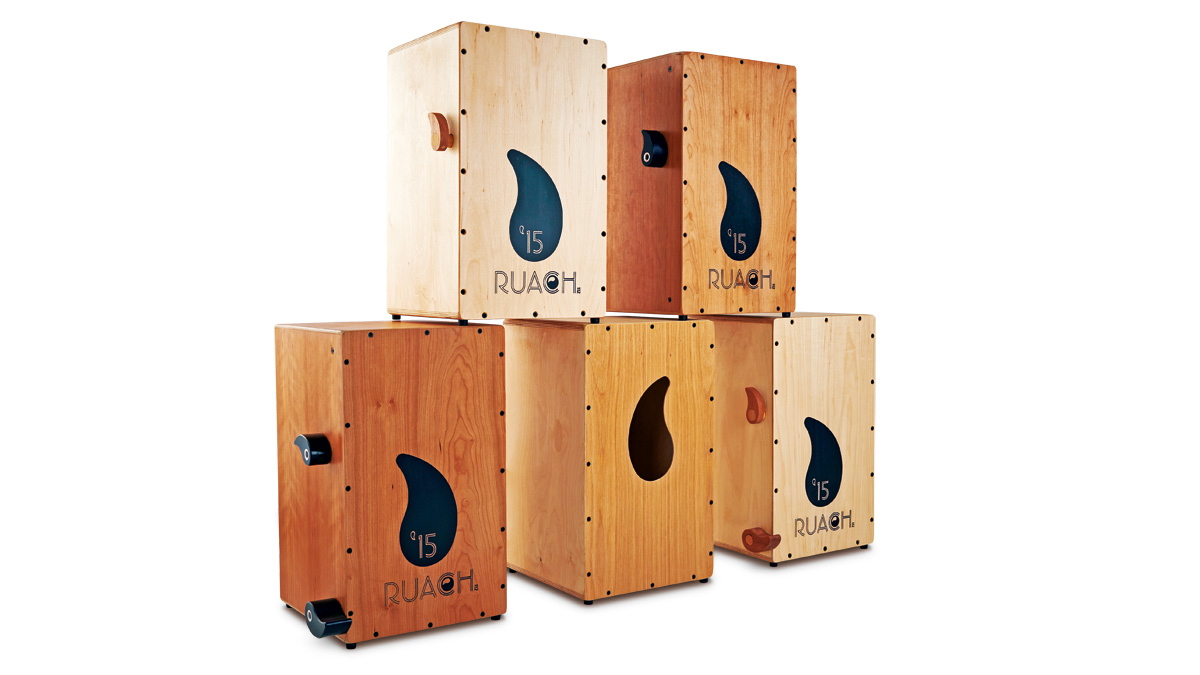MusicRadar Verdict
The MK1 may be vanilla, but it gets the nod from us.
Pros
- +
MK1 is great value.
Cons
- -
Some snare issues.
MusicRadar's got your back
Ruach Cajons has come a hell of a long way in a very short space of time.
Founded in Northern Ireland by a then-16-year-old Phil Henderson just four years ago, the company started out as purely a way for the teenager to get his hands on a cajon without breaking the bank. He couldn't afford one, so he knocked up his own.
Word of young Phil's handiwork quickly spread and today Ruach makes five different cajons. Today, we have Ruach's MK series to review.
Build
Priced at £110, the MK1 is the company's entry-level offering. This is also the original Ruach design, a 50cm x 30cm x 30cm birch instrument with fixed snares and a natural finish. Moving up the range, the MK2 offers all that plus a two-way lockable snare. It's also a touch bigger, coming in at 50cm x 32cm x 30cm. The MK3 ups the stakes, adding what is a major selling point for Ruach, an integral bass pedal. Again it is also slightly larger in size at 50cm x 34cm x 32cm.
Hands On
The MK1 is straight-up vanilla - the original Ruach Cajon and sans frills. But, what it is is a solid budget cajon. At just £110 we didn't hold out great hopes for this one, but the birch instrument kicks out a consistent tone no matter where you hit.
The MK2 ramps things up ever-so- slightly by adding an on-off mechanism for the snare. It's a nice addition in theory, and it does add some tones to your arsenal, but we found the mechanism to be a little flimsy. We wouldn't fancy gigging this one, and would actually opt for the MK1 if given the choice.
The MK3 sits atop the MK line and, as previously discussed, adds a bass pedal. Again, we ran into some issues with the snare mechanism and found that we encountered some unwanted rattle when the snare was turned off.
At £210, the MK3 looks feature-packed, but the snare problem is something of a deal-breaker. We did put plenty of time into adjusting the snare settings with some degree of joy, but the MK3 just didn't wow us in the way that the MK1 did.
At first the MK3's pedal feels a little fiddly, it's a pretty small surface area that you need to get your foot onto, and Ruach has possibly sacrificed ergonomics for style by making the pedal in the shape of the company's logo.
Playing heel up, as recommended by Ruach, is tricky and wears on the muscles pretty quickly. After a little experimenting, however, we hit paydirt. For our money your best bet is to whip your shoes off and play heel up. All of a sudden knocking out some multi-faceted grooves is an absolute doddle.
Sonically, the internal beater gives a decent response, but can occasionally be a little underpowered unless you give it some welly each and every time.
Rich is a teacher, one time Rhythm staff writer and experienced freelance journalist who has interviewed countless revered musicians, engineers, producers and stars for the our world-leading music making portfolio, including such titles as Rhythm, Total Guitar, Guitarist, Guitar World, and MusicRadar. His victims include such luminaries as Ice T, Mark Guilani and Jamie Oliver (the drumming one).
“The most musical, unique and dynamic distortion effects I’ve ever used”: Linkin Park reveal the secret weapon behind their From Zero guitar tone – and it was designed by former Poison guitarist Blues Saraceno’s dad
Arturia’s V Collection gets a Roland JP-8000 emulation and lo-fi synth/sampler, along with five more instruments and a host of updates
Capture the sound of The Last of Us season 2's haunting soundtrack with Spitfire Audio’s latest software instrument, Ronroco by Gustavo Santaolalla











